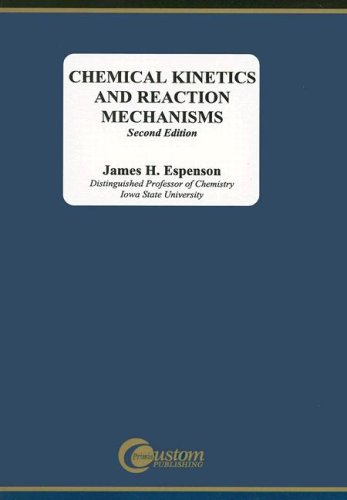Chemical kinetics and reaction mechanisms pdf free
Par burnham jeanne le jeudi, janvier 21 2016, 06:26 - Lien permanent
Chemical kinetics and reaction mechanisms. James H. Espenson

Chemical.kinetics.and.reaction.mechanisms.pdf
ISBN: 0070202605,9780070202603 | 296 pages | 8 Mb

Chemical kinetics and reaction mechanisms James H. Espenson
Publisher: McGraw-Hill Science/Engineering/Math
The balanced chemical equations used to describe a reaction are a description of the overall process, but usually doesn't give an accurate picture of what actually happens. The rates of chemical processes and their variation with conditions have been studied for many years, usually for the purpose of determining reaction mechanisms. Worse, the mechanisms behind wear processes are better understood for things like car engines than nanotech devices. The branch of physical chemistry which deals with the rate of reactions, their mechanism, conditions and the factors influencing the rate of reactions. The “1” in SN1 indicates a that the mechanism involves a single reaction step and exhibits second-order kinetics. All these questions can be answered by the branch of chemistry, which deals with the study of reaction rates and their mechanisms, called chemical kinetics. Steady-state and equilibrium approximations. Kinetics Kinetics‡ Studies the rate at which a chemical process occurs. Introduction to reaction kinetics. It would also provide information on how fast a chemical product would work and the reaction mechanism. Applications: chemical and phase equilibria. Complex reactions and mechanisms. But now That means we can apply chemical kinetics, or reaction rate theory, to the wear process.". Kinetics 3: Reaction mechanisms. � Besides information about the speed at which reactions occur, kinetics also sheds light on the reaction mechanism (exactly how the reaction occurs).
Biotechnology: Academic Cell Update Edition pdf
Great moments in mathematics (after 1650) epub
Practical BGP book